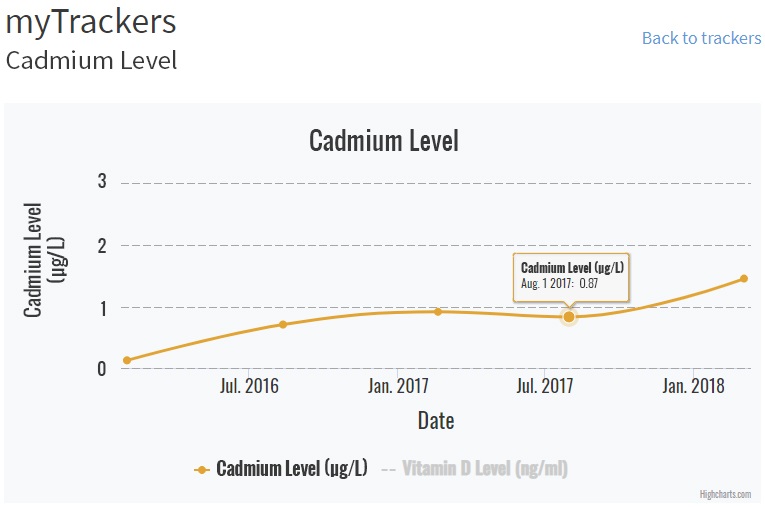Published on February 20, 2019
D*action Magnesium + Safety is a new project from GrassrootsHealth to provide you with information about your nutrient status for many essential elements and toxins. In previous blogs we discussed what magnesium is, why it’s important for health, and how magnesium status is assessed. We also previously discussed selenium, zinc, and copper. In the next few blogs we will talk about the heavy metal toxic elements included in this test, starting with Cadmium.
What is Cadmium?

Cadmium, which is classified as a group 1 human carcinogen, is a soft, silver-white metal that is found in the earth’s crust with zinc, copper, and lead ores. It is extracted as a byproduct from the production of these other metals and has been used for batteries, pigments, coatings and plating, stabilizers for plastics, alloys, and solar panels. During metal mining and refining, cadmium can leak into soil and water sources and is emitted into the air. The burning of fossil fuels, waste incineration and disposal, and the manufacture and use of phosphate fertilizers are also sources of cadmium in the environment. Cadmium enters the food supply when it binds to organic matter in crops.
How are you exposed to Cadmium?

The food supply is the main exposure for most people, particularly in areas with cadmium contaminated soils. However, cadmium in food and water in North America is not at a level to cause a health concern for the general population. Certain plants and foods, such as green leafy vegetables, potatoes and grains, peanuts, soybeans, sunflower seeds, and shellfish can contain trace amounts of cadmium. Tobacco leaves have high cadmium levels, and because cadmium that is inhaled is more readily absorbed than cadmium ingested with food or water, smokers have about twice the exposure of non-smokers. Also, individuals who work in the smelting and metal refining, battery manufacturing, colored glass manufacturing, plastics manufacturing, solar panel manufacturing, and waste management industries tend to have higher exposure to cadmium. Multiple government agencies, such as the Environmental Protection Agency (EPA) and the Food and Drug Administration (FDA) develop and enforce regulations regarding cadmium in drinking water, consumer products, and workplace air.
What are the potential health effects of Cadmium?
Long-term, lower level exposure results in cadmium accumulation in the kidneys and thyroid gland, and can contribute to thyroid issues, kidney disease, infertility, uterine fibroids, and other reproductive tract diseases if the build-up is high enough. Cadmium has also been found to cause cancer and to affect the body’s cardiovascular, neurological, gastrointestinal, and respiratory systems. Workers who inhale air with high levels of cadmium can severely damage lungs and may cause death. Consuming food or water with very high levels can severely irritate the stomach and lead to vomiting, diarrhea, and sometimes death.
How is Cadmium measured in the body?
Cadmium status can be assessed with a dried blood spot test. This test is a reflection of short-term cadmium exposure. The lab reference range for cadmium is less than 1.04 micrograms per liter (μg/L).
Order your D*action Magnesium + Safety test TODAY! — includes Cadmium test
How can I track my Cadmium intake and level?
To help you track your toxin levels, GrassrootsHealth has created an online tracking system called myData-myAnswers. This will help you know how your toxin levels impact your health. Check it out today!








